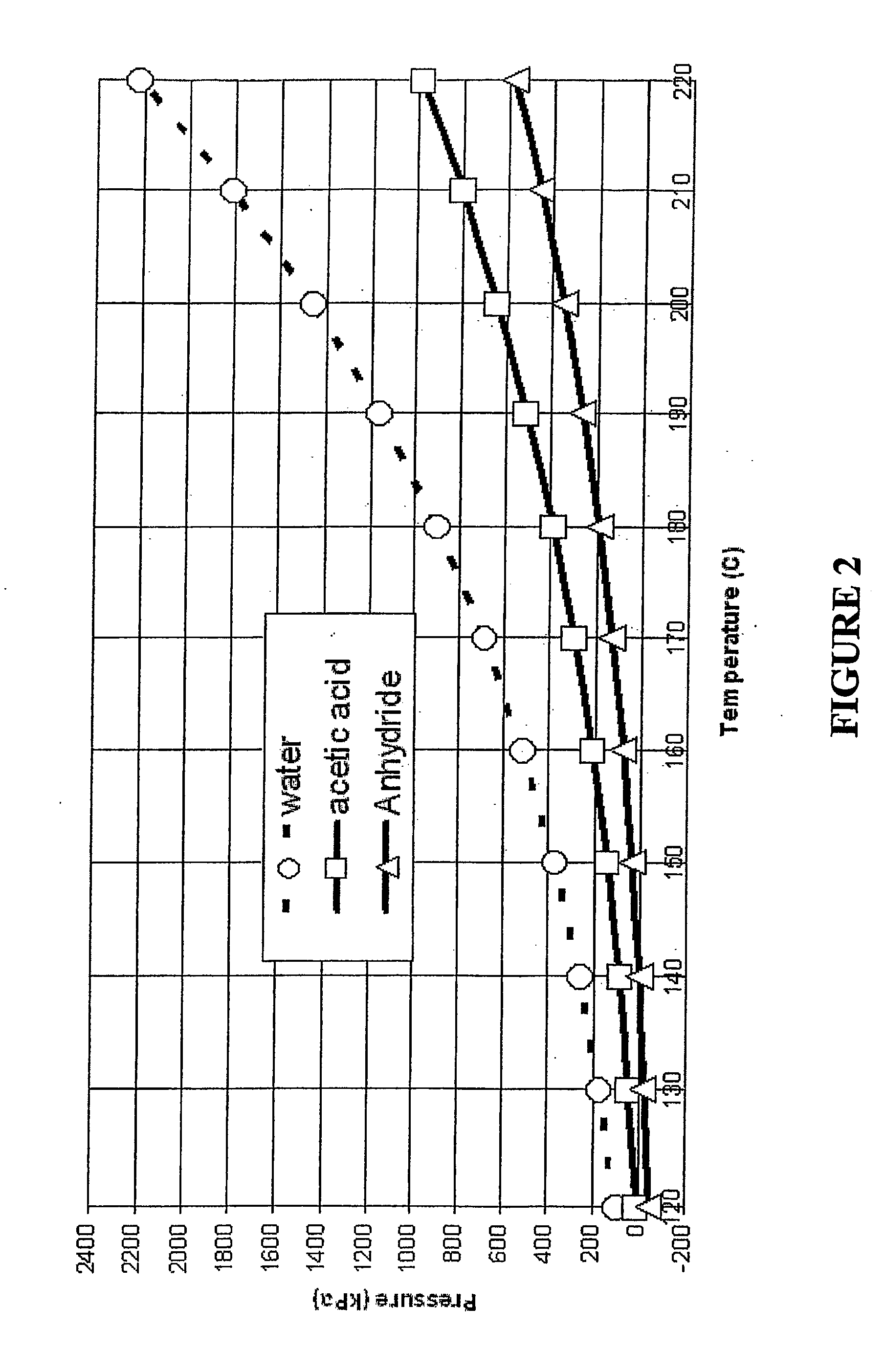Impregnation process
a technology of impregnation process and gaseous acetylation, which is applied in the direction of pretreated surfaces, coatings, layered products, etc., can solve the problems of insufficient loading or weight gain of solid wood for improving stability and decay resistance, and the use of heavy metals in preservatives for timber treatment is now not favoured, so as to reduce the pressure to remove
- Summary
- Abstract
- Description
- Claims
- Application Information
AI Technical Summary
Benefits of technology
Problems solved by technology
Method used
Image
Examples
experiment 1
[0066] Radiata pine matched sapwood measuring 300×60×45 mm for ASE (Anti Shrink Efficiency) and 300×20×20 mm for strength test was used in each run for the first nine treatments referred to below. Radiata pine matched sapwood measuring 300×65×45 mm for ASE and two 300×20×20 mm lengths for strength test was used for the treatments 10 to 20.
[0067] All wood samples were oven dried prior to treatments except treatments 6, 7 and 20.
[0068] Acetylation was conducted in three interconnected 2 litre stainless steel cylinders. Cylinders 1 and 2 had a heating jacket connected to PID controller to maintain temperature control. Pneumatic pressures were attained using compressed nitrogen gas.
The volumetric swelling coefficient was calculated according to the following formulae. S=V2-V1V1×100
where S=volumetric swelling coefficient
[0069] V2=wood volume at water saturation
[0070] V1=oven dried wood volume before saturation
Anti Shrink Efficiency was then calculated as follows: ASE=SC-SMSC×1...
experiment 2
Solvents with Preservative Agent
[0078] Two solvents, Isopropyl alcohol and methylene chloride were tried with copper naphthenate as the preservative. One piece of radiata pine sapwood end-sealed 290×72×44 mm was treated in each treatment.
[0079] A total of five treatments were conducted, three with Isopropyl alcohol and two with Methylene Chloride. Treatment time for all treatments was 35 minutes. The plant described in experiment 1 was used and cylinder 102 was pre heated to 70° C. for all treatments. Initial pneumatic pre-pressure for all treatments was adjusted to the boiling pressure of respective solvent at elevated temperature.
[0080] Table 3 shows the treatment process and solvent recovery for all treatments.
TABLE 3Treatment Process, Net Uptake, Net Copper NaphthenateUptake and Solvent remaining in the WoodSolventTemperatureNet CopperAnalyticalNet Solvent(° C.) / HydraulicNetNaphthenateCopperUptakePressurePressureUptakeCalculated(% w / w)CalculatedCopperTreatment(kPa)(kPa)(Kg / m...
experiment 3
ylation and Other Species
[0081] A further experiment was conducted on Sitka spruce, Scots pine and radiata pine as in Table 4.
[0082] Succinic anhydride also reacts to wood hydroxyl group in the same way as acetic anhydride, but creating no acidic by-product. In treatment 39, 10% succinic anhydride was dissolved in acetic anhydride working solution to observe the reduction of wood charring and effect on other wood properties.
TABLE 4SolutionTotal TimeWoodTemperatureExtraMaximumHydraulicPneumaticBleedingVacuum(minute)MoistureBeforePressureTempTimeTimeTimeTimeIncludingTreatmentContent(C. °)(kPa)(C. °)(minute)(minute)(minute(minute)RecoveryRadiata 37OD19850015551.01.54047.5Radiata 38OD190500167151.02405810% SA*Radiata 39OD191500169161.023857Used AA**Radiata 40OD193500168151.023856Used AARadiata 419190500168161.024059Radiata 48OD220500168151.023656Radiata 49OD22050015051.025059Scots 1OD190800162101.053349Spruce 1OD193800162101.034054Scots 2OD18050013951.034655Spruce 2OD18250014351.0344...
PUM
| Property | Measurement | Unit |
|---|---|---|
| Temperature | aaaaa | aaaaa |
| Temperature | aaaaa | aaaaa |
| Temperature | aaaaa | aaaaa |
Abstract
Description
Claims
Application Information
 Login to View More
Login to View More - R&D
- Intellectual Property
- Life Sciences
- Materials
- Tech Scout
- Unparalleled Data Quality
- Higher Quality Content
- 60% Fewer Hallucinations
Browse by: Latest US Patents, China's latest patents, Technical Efficacy Thesaurus, Application Domain, Technology Topic, Popular Technical Reports.
© 2025 PatSnap. All rights reserved.Legal|Privacy policy|Modern Slavery Act Transparency Statement|Sitemap|About US| Contact US: help@patsnap.com



